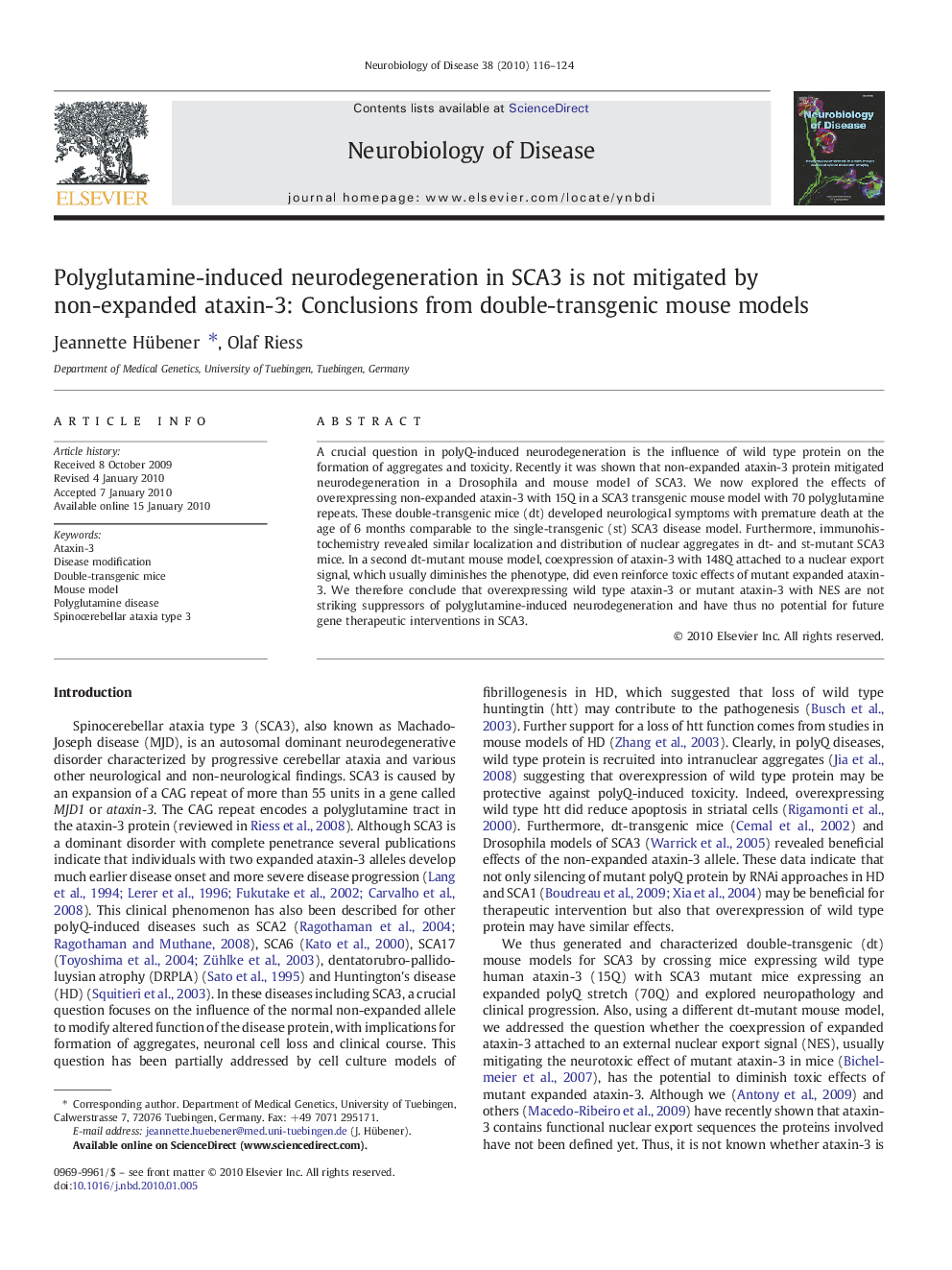| Article ID | Journal | Published Year | Pages | File Type |
|---|---|---|---|---|
| 3069963 | Neurobiology of Disease | 2010 | 9 Pages |
A crucial question in polyQ-induced neurodegeneration is the influence of wild type protein on the formation of aggregates and toxicity. Recently it was shown that non-expanded ataxin-3 protein mitigated neurodegeneration in a Drosophila and mouse model of SCA3. We now explored the effects of overexpressing non-expanded ataxin-3 with 15Q in a SCA3 transgenic mouse model with 70 polyglutamine repeats. These double-transgenic mice (dt) developed neurological symptoms with premature death at the age of 6 months comparable to the single-transgenic (st) SCA3 disease model. Furthermore, immunohistochemistry revealed similar localization and distribution of nuclear aggregates in dt- and st-mutant SCA3 mice. In a second dt-mutant mouse model, coexpression of ataxin-3 with 148Q attached to a nuclear export signal, which usually diminishes the phenotype, did even reinforce toxic effects of mutant expanded ataxin-3. We therefore conclude that overexpressing wild type ataxin-3 or mutant ataxin-3 with NES are not striking suppressors of polyglutamine-induced neurodegeneration and have thus no potential for future gene therapeutic interventions in SCA3.
